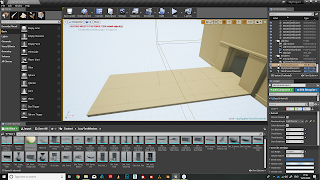I started iterating the character using my moodboard for reference and silhouette drawings. I wanted the Pharaoh to look regal and different from the guards and the stereotypical pharaoh figure. To do this, I was going to use historically accurate references for crowns, clothing and jewellery.
I played with different types of silhouette, such as wide, slender and tapered clothing. I chose my three favourites, which had a lot of variety from each other, and developed them using more detailed sketches. This allowed me to place jewellery and patterns on the pharaoh to see what combinations worked best.
I then took some favourites of my sketches and developed them further, by combining elements from a few and creating a final detailed sketch from this. I also did a value pass to help me further develop the clothing.


Then I created some sketches of the pharaoh's face. I used reference images of facial reconstructions of ancient Egyptian mummies to create a more accurate apearance of ethnicity and face shape. I also experimented with skin tones and hair styles, choosing a dark/midtone skin colour and a shaven head, as from further research I found that Pharaohs were often bald to symbolise their coming of age. Even though the top of the Pharaoh's head will not be visible in the game, I had experimented with wig styles and braids. This experimentation will make the character concept more complete.




The next stage was to gather more reference for the details of the pharaoh's clothing, such as the colours used, the pleated skirt, the use of gold and jewels and materials. I used references from photos at the Tutunkhamun exhibition that I visited in London, as well as photos from the internet that showed artefacts from tombs. I then used photobashing and altered them appropriately to make the source material into my own, and blended the photobashed materials using painting. I was pleased with the final photobash as I thought it displayed enough detail for a 3D artist to model from.

I used selective colouring in photoshop to choose apporpriate colours for the pharaoh. The main colours I wanted to show were gold, Lapis blue and red. These are colours associated with royalty in Ancient Egypt. I therefore chose different variations of these shades, adding more reds, greens or yellows to the tones when experimenting. I was happy with the colour combinations I chose as it displayed the wealth of the Pharaoh and was visually appealing.





























































